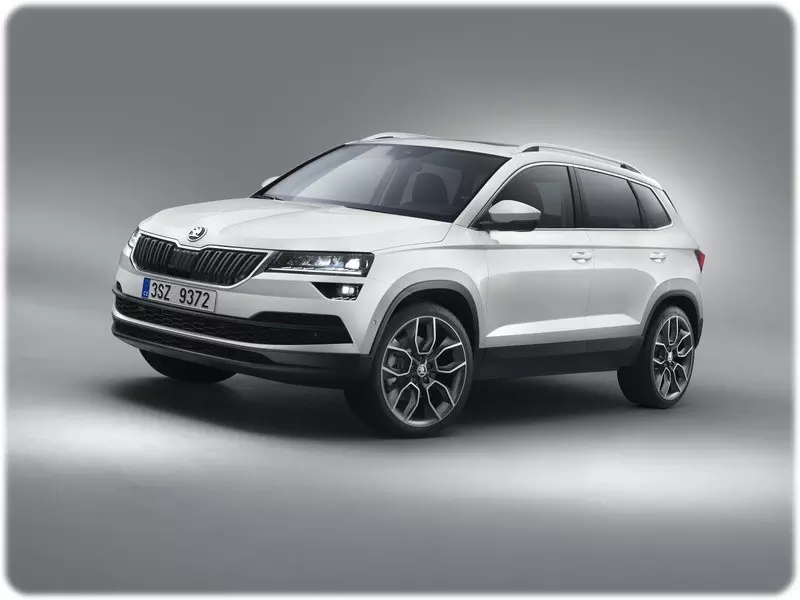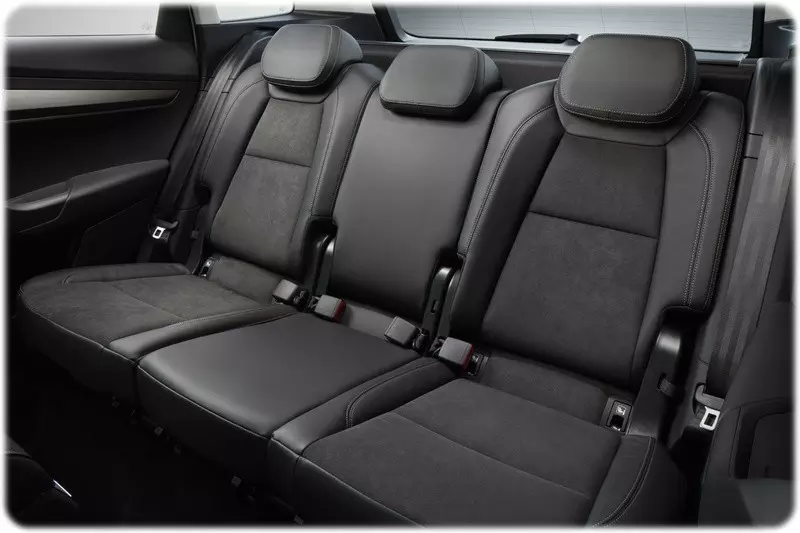The New Skoda Karoq
Published Date: 23rd May 2017
Skoda has now unveiled the replacement for the Yeti, called the Karoq. Looking like a slimmer version of its bigger brother the Kodiaq, the compact sized SUV looks nothing like the vehicle it’s replacing, but it does follow the trend of the modern SUV market and opens up global oppurtunities with it's modern design
The all New Skoda Karoq

The Yeti was and still is a completely original design that many loved and one of the first small family SUVs. Now the Czech manufacturer is going for a more modern and mature approach for the latest offering in the crossover market with the Karoq.

The new Karoq looks exactly the same size as the Seat Ateca also one of the VW group’s competitors in the market. This is because they’re built upon the same MQB platform architecture. Wheel base measurements are the same but they are set apart with different design cues taken from their respective brand.

After the initial launch with the standard trim levels we also expect to see the sportline and scout trims make a return, alongside what could be a possible plug in hybrid in the future. Plans for a vRS version could also be on the cards with the firms CEO Bernhard Naier already detecting customer demand for a fast SUV from Skoda that could sport the vRS badge that is only currently available on the Octavia.
The Karoq will be released with a range of Diesel and Petrol engines
Petrol engines:
New: 1.0 TSI 85kW (115PS), 175Nm of torque, top speed of 187km/h, 0-100km/h in 10.6seconds, combined consumption of 5.2l per 100km, combined CO2 emissions of 117g/km
New: 1.5 TSI –110kW (150PS), 250Nm of torque, top speed of 204km/h, 0-100km/h in 8.4seconds,combined consumption of 5.1l per 100km, combined CO2emissions of 119g/km
Diesel engines:
New: 1.6 TDI–85kW (115PS), 250Nm of torque, top speed of 188km/h, 0-100km/h in 10.7seconds, combined consumption of 4.5l per 100km, combined CO2 emissions of 118g/km›
2.0 TDI –110kW (150PS), 340Nm of torque, top speed of 207km/h, 0-100km/h in 8.9seconds, combined consumption of 4.4l per 100km, combined CO2 emissions of 115g/km
All the figures above apply to models with front-wheel drive and 6-speed manual transmission.
New: 2.0 TDI –140kW (190PS), 400Nm of torque, top speed of 211km/h, 0-100km/h in 7.8seconds, combined consumption of 5.3l per 100km, combined CO2 emissions of 138g/km.
The new 2.0 litre diesel will be only available on the 4 wheel drive version with a seven speed DSG gearbox only. The rest of the line up comes in six speed manual or DSG at an extra cost. The 1.5 petrol listed above comes standard with the Active Cylinder shutdown technology as standard and figures show it reduces emissions and can save up to half a litre of fuel over 100km.
The new Karoq will also receive the updated instrument cluster featured on many of the VW groups other new model. The Karoq is the very first Skoda to receive the all digital screen, this can be set into various different modes to display sat-nav instructions, gear change notifications and traffic sign recognition.

The infotainment system as standard called swing has DAB radio and Bluetooth with a 6.5 inch touch-screen. The next level, Bolero, gets a higher resolution 8 inch screen and includes Smart link plus that allows compatibility with the latest Smartphone connectivity Android Auto and Apple Car play. Third in the list is the Amundsen that features the same screen as before but has sat-nav and a wifi hotspot. The top of the range Columbus has a 9.2 inch display, CD/DVD drive, 4G mobile internet module and gesture control for another Skoda First.
Other interior features that may be options on some trim levels include a hands-free electric tailgate, as long as you key is on your person you only have to wave a foot under the rear bumper to activate it. LED interior ambient lighting with up to ten colours, exterior puddle lamp LEDs to light up the floor when exiting the vehicle and full LED headlamps with LED fog lamps on the outside make up other options available.
Board member for technical development Christian Strube said: "After the Kodiaq, the Karoq takes the next consistent step in our SUV design. We've done over 2.5m kilometres [1.55m miles] of testing - that's equivalent to 60 times around the world.
"We have the option of personalisation for up to three different drivers. You can set up to 200 settings and that's saved to your personal key. We have made clever use of the interior space. It's typically Skoda. One Karoq offers 100% of what a Skoda customer wants in life."

The five seat SUV delivers more interior space than the outgoing Yeti with the rear seats folded down. The space can also be increased further by choosing the VarioFlex option when factory ordering. VarioFlex lets you have movement adjustment on each individual rear seat and also allows for the full removal of all three, if you need the extra space.

You can expect the usual line of safety kit you’d expect to see on the latest new model with Front Assist autonomous emergency braking coming as a standard fit. Then other systems on the option list include Adaptive cruise control Blind Spot Detect, Rear Traffic Alert, Traffic Sign Recognition and Lane Assist. Different alloy wheel designs will be made available in 17, 18 and 19 inch alloys alongside the standard 16 and 17 inch alloys.
The All New Karoq will be available to order later in the year with first deliveries expected to be in January 2018
